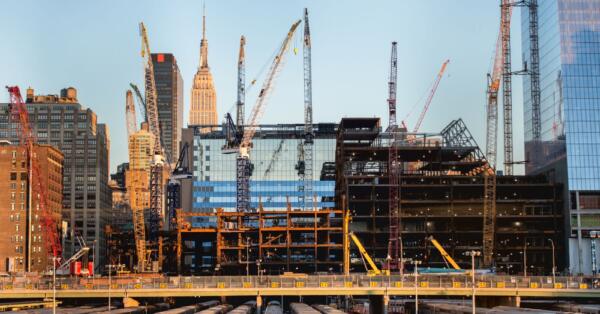While it is in the interest of all parties to work together to successfully complete the project in accordance with contract documents on time and within budget, construction projects do not always run according to plan. When disputes arise between the prime contractor and a subcontractor, this process becomes complicated. Therefore, proactive resolution of disputes is critical in avoiding disruption to the work and potential litigation that will result in long and costly proceedings for all involved. This post focuses on construction dispute resolution procedures for dealing with non-performing subcontractors.
Best Practices for Dealing With Non-Performing Subcontractors
The prime contractor’s actions will greatly vary depending on the dispute resolution options allowable under the subcontract or any subsequent agreements executed between the parties throughout the project. There are several possible approaches, beginning with collaboration to resolve performance issues, all the way to termination.
Identify the Cause of the Performance Issue and Collaborate to Resolve It
Once a problem has been identified with a subcontractor’s performance, it is important to document the issue immediately. A contractor should keep an open mind as there may be other factors contributing to the subcontractor’s performance issues, e.g.
- unanticipated schedule interferences
- limited material supplies
- workforce troubles
At the same time, it is essential to closely follow the terms of the subcontract to ensure that the completion contractor or performing surety maintains their rights under the subcontract. Notice provisions that require a certain time frame or form of notice, e.g., written or delivery via certified mail, must be strictly adhered to in order to avoid claims of improper administration of the subcontract.
The best advice is to meet with the subcontractor’s management personnel to evaluate and remedy the situation with collaborative efforts from both parties.
Supplement the Subcontractor’s Work
Provided the subcontract includes provisions for the supplementation of the subcontractor’s scope of work and for the back-charge of such costs, augmenting the subcontractor’s workforce is an option only after the subcontractor has demonstrated inability to complete the work of the contract satisfactorily. This method is effective for improving the project’s performance while keeping the subcontractor involved in the completion of the project. It allows the subcontractor to complete the remaining scope of work while augmenting their workforce, thus increasing the chances of meeting the project schedule.
This approach should be applied with caution though as challenges may arise if the subcontractor chooses not to cooperate effectively with the staff added by the contractor.
Descope Portions of the Subcontractor’s Work
Another way of mitigating the risk of a subcontractor’s performance is to reduce the subcontractor’s scope of work via a deductive change order and then award the work to an alternative subcontractor. This method results in scope as well as a financial deduction of the contract amount based upon the cost to bring in the new subcontractor.
Most standard subcontract agreements include language that allows for the descoping of specific and defined portions of work. This method allows the subcontractor to focus its entire workforce on the work still within the scope. The contractor is able to procure a specialized subcontractor to complete the descoped work.
One drawback to this approach is that the new subcontractor may not know the project as well and may have to jump through more hoops to be successful.
Terminate the Subcontractor
When all other mitigation efforts have proven unsuccessful, the termination of the subcontractor is the last and final method available. The subcontract agreement will typically enumerate the actions that constitute a breach of contract. At this point, it is highly recommended to consult legal counsel, if not already engaged in the process, to ensure that there are legal grounds to terminate the subcontractor for breach of contract. It is also important to follow the procedural requirements for termination specified in the subcontract agreement which is likely to include an opportunity to respond and/or cure their defective work or non-performance prior to termination. Once a subcontractor has been terminated, the contractor will need to replace them immediately to avoid further delays.
This is the most severe option and should only be taken if the risks of keeping the subcontractor on the project outweigh the risks of the potential downsides, including
- the time it takes to procure a new subcontractor,
- the institutional knowledge that may leave with the departing subcontractor, and
- the costs of potential litigation.
Expect the Best, But Plan for the Worst
No one starts a project expecting that performance issues will present a challenge to the successful completion of the contract. Still, the complexity and cost of augmenting a subcontractor’s workforce, reducing portions of their contracted scope of work, or terminating the subcontractor altogether make understanding the process critical. These actions may have legal ramifications, hence the importance of carefully drafting provisions in construction contracts that protect the contractor’s interests against any potential liability.
If you have any questions or require assistance regarding troubled construction projects, contact us at 888.298.5162 or submit a request.






